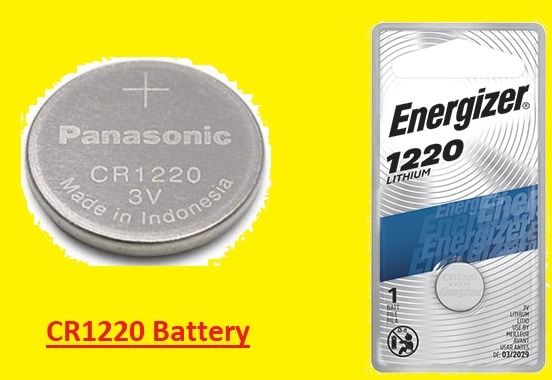Introduction
When it comes to powering small devices like watches, calculators, and various electronic gadgets, CR1220 batteries have long been a popular choice. However, with advancements in technology and the growing demand for more sustainable options, it’s worth exploring alternatives to this ubiquitous power source. In this article, we’ll delve into the world of CR1220 battery equivalent, examining their features, advantages, and potential applications.
Understanding CR1220 Batteries
Before we delve into alternatives, let’s first understand what CR1220 batteries are and why they’re widely used. CR1220 is a designation for a lithium coin cell battery, commonly measuring 12mm in diameter and 2.0mm in height. These batteries typically feature a nominal voltage of 3 volts and are known for their compact size and long shelf life. They find applications in various devices requiring low power consumption over an extended period.
The Need for Alternatives
While CR1220 batteries have served their purpose effectively, there are several reasons why exploring alternatives is essential. Firstly, lithium-based batteries pose environmental concerns due to their chemical composition, making sustainable options more attractive. Secondly, technological advancements have led to the development of alternative battery chemistries that offer improved performance and efficiency. Lastly, diversifying options ensures compatibility with evolving device designs and consumer preferences.
CR1220 Battery Equivalents: A Comprehensive Overview
- LIR1220 Rechargeable Batteries: LIR1220 batteries serve as rechargeable alternatives to CR1220 cells. With a similar form factor and voltage, these lithium-ion rechargeable batteries offer the advantage of being reusable, thus reducing waste and long-term costs. They are ideal for devices where frequent battery replacement is impractical or undesirable.
- BR1220 Batteries: BR1220 batteries, also known as lithium carbon fluoride (Li/CFx) batteries, provide a non-rechargeable alternative to CR1220 cells. These batteries offer higher energy density and longer shelf life, making them suitable for applications requiring extended reliability, such as in medical devices and industrial sensors.
- CR1216 and CR1225 Batteries: While not direct equivalents, CR1216 and CR1225 batteries share similar characteristics with CR1220 cells. They differ primarily in diameter and thickness, offering compatibility with devices designed for CR1220 batteries with slight modifications. These alternatives provide flexibility in design and can be suitable for space-constrained applications.
- Alternative Chemistries: Beyond lithium-based batteries, alternative chemistries such as zinc-air and silver oxide offer viable alternatives to CR1220 cells. Zinc-air batteries, for instance, utilize oxygen from the air to generate power, making them lightweight and environmentally friendly. Silver oxide batteries, on the other hand, provide stable voltage output and are commonly used in precision instruments and medical devices.
Benefits of Exploring Alternatives
- Environmental Sustainability: Switching to alternative battery chemistries reduces reliance on finite lithium resources and minimizes environmental impact through the use of eco-friendly materials and recycling options.
- Improved Performance: Some alternative batteries offer superior performance in terms of energy density, shelf life, and temperature tolerance compared to traditional CR1220 cells, enhancing overall device efficiency and reliability.
- Cost Efficiency: Rechargeable alternatives can lead to significant cost savings over time, as they eliminate the need for frequent battery replacements and disposal, making them economically viable in the long run.
Applications of CR1220 Battery Equivalents
- Consumer Electronics: From watches and calculators to remote controls and key fobs, alternative battery equivalents find applications in a wide range of consumer electronic devices, ensuring reliable power supply with reduced environmental impact.
- Medical Devices: In medical devices such as glucose monitors, hearing aids, and pacemakers, the reliability and longevity offered by alternative battery chemistries are critical for patient safety and device functionality.
- Industrial Automation: Industrial sensors, data loggers, and remote monitoring devices benefit from the long-lasting power provided by alternative batteries, ensuring uninterrupted operation in challenging environments.
Conclusion
While CR1220 batteries have been a staple power source for various small devices, exploring alternatives opens up new possibilities for improved performance, sustainability, and cost efficiency. From rechargeable lithium-ion cells to advanced battery chemistries, there’s a diverse range of options available to meet the evolving needs of modern electronics. By embracing alternative battery equivalents, we can pave the way for a greener and more efficient future in powering our everyday gadgets and devices.





